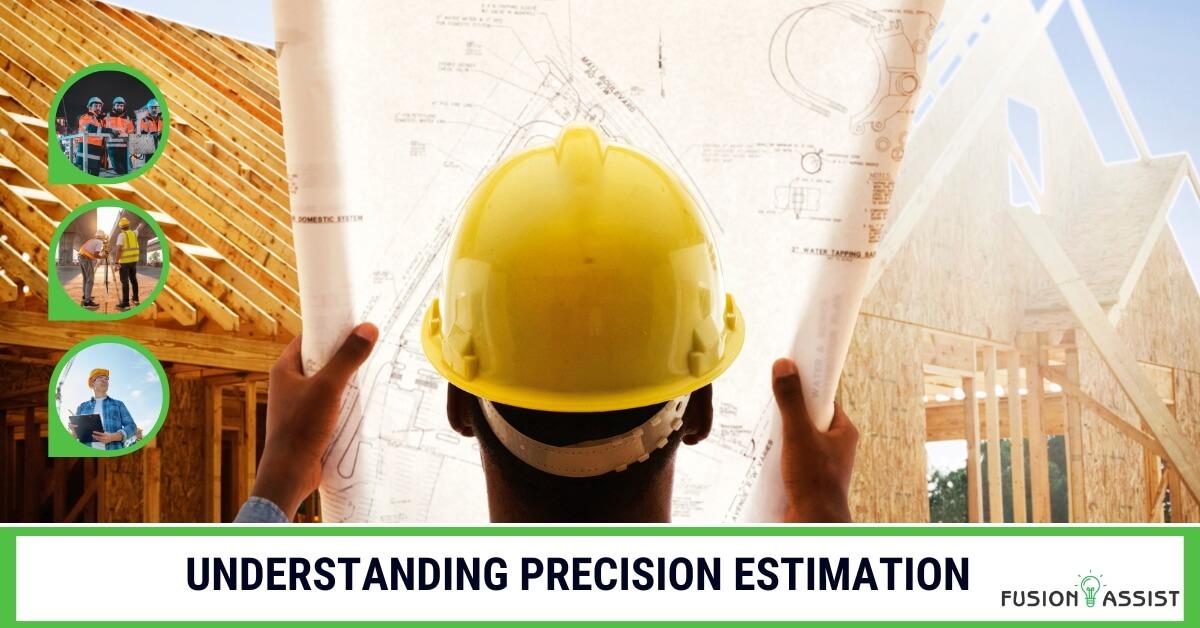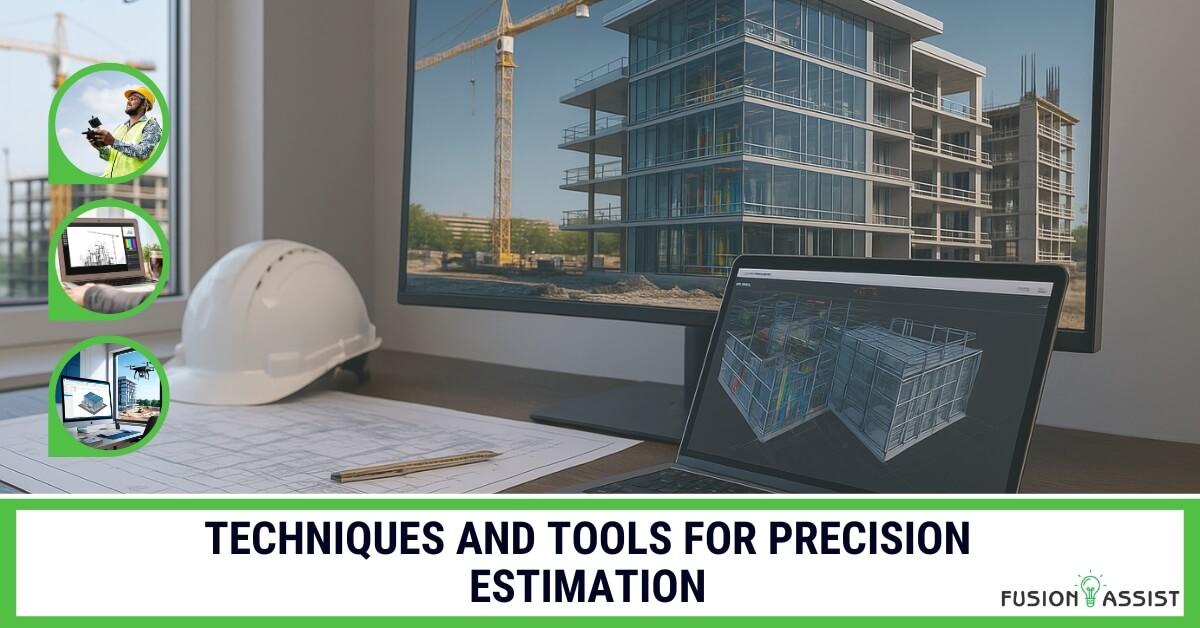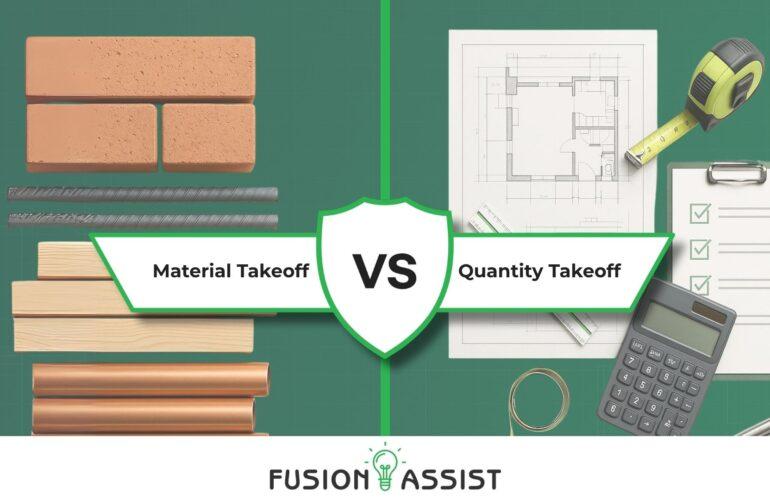Accurate estimation is the primary requirement for running practical construction projects. The process requires precise material, labor, and time cost forecasting to develop an extensive execution guide spanning the entire project duration. Precise estimation enables construction firms and property developers to execute projects within expected timelines and budgets while preventing unexpected financial matters. This article delves into the importance of precision estimation, the consequences of inaccurate estimates, and the tools and techniques used to achieve precise estimates.
Understanding Precision Estimation

What is Precision Estimation?
Precision estimation involves accurately predicting construction project costs, resource requirements, and duration. This concept includes four vital elements: material expenditures, labor fees, equipment specifications, and overhead expenses. Precision estimation is vital because it establishes a unified direction that guides project managers, stakeholders, and their workforce.
The Process of Precision Estimation
The process starts by following multiple steps for precision estimation.
- Initial Assessment: The assessment stage involves a complete analysis of project goals, requirements, and scope definition.
- Data Collection: The second step involves collecting data on materials, labor rates, equipment costs, and all other necessary information.
- Analysis and Calculation: The collected data undergoes analysis through specialized software that enables precise calculations
- Review and Adjustment: Regular assessment of estimates for monitoring project scope changes and market dynamics, as well as other modifying variables.
Why Precision Estimation is Vital for Your Construction Project
1. Managing Project Costs
A project needs accurate budget cost estimation to handle finances properly. Precision estimation helps in:
- Accurate Forecasting of Material Costs: Material costs remain accurate in forecasting by precisely identifying the required materials alongside their present market prices through precision estimation.
- Labor Cost Estimation: Planning workforce requirements becomes possible, along with labor shortage prevention, while avoiding staff excess through precise labor cost predictions.
- Equipment and Overhead Costs: Detailed estimates of overhead and equipment rental expenses prevent any costs from missing out in the project budget.
2. Managing Project Timelines
Time management plays an identical role in the success of construction projects. Precision estimation helps in:
- Importance of Timely Completion: Accurate Project estimates help builders finish work according to schedule, fulfill deadlines, and prevent time-consuming delays.
- Impact of Delays on Project Costs: Delays create higher labor costs with material price changes, which result in increased overhead expenses. Precision estimation helps organizations reduce these potential threats.
3. Risk Mitigation
Precision estimation also plays a crucial role in risk management:
- Identifying Potential Risks Early: Precision estimation allows for proactive problem-solving and contingency planning by identifying potential issues early.
- Contingency Planning: Project duration stability results from precise estimates, which create extra funds for unforeseen expenses and project delay situations.
Consequences of Inaccurate Estimation
1. Cost Overruns
The use of incorrect estimates creates a massive increase in the financial cost of projects.
- Causes of Cost Overruns: Three major contributors to cost overruns in construction projects are inadequate material cost forecasting, labor shortages, and unpredictable site conditions.
- Impact on Budget and Financial Health: Cost overruns generate adverse financial effects that produce legal problems and harm organizational reputation and budgetary health.
2. Time Delays
Inaccurate estimates lead to prolonged timelines, which become one of the most critical adverse effects.
- Causes of Time Delays: The main contributors to time delays include material shortage, labor disputes, and equipment breakdowns.
- Impact on Project Schedule and Deadlines: Project delays caused by inaccurate estimates result in failed project deadlines, which produce higher labor costs and additional overhead maintenance expenses.
3. Legal and Reputational Risks
Inadequate estimation accuracy produces legal issues as well as reputation damage due to various reasons:
- Legal Implications of Inaccurate Estimates: Professional estimates that prove incorrect may trigger legal disputes involving clients, subcontractors, and suppliers.
- Damage to Company Reputation: Repeated problems with cost overruns, together with delays, permanently damage customers’ perceptions of the company, which results in fewer opportunities for business in the future.
Benefits of Precision Estimation
1. Cost Control and Management
Accurate precision estimation provides various advantages that improve cost control and management functions.
- Preventing Cost Overruns: Implementing accurate cost estimates minimizes cost overruns because every expense gets properly documented.
- Efficient Resource Allocation: Strategic resource optimization becomes possible through accurate estimates, decreasing waste and improving general efficiency.
2. Time Management
The estimation process with high precision leads to better time management.
- Preventing Time Delays: Accurate project estimates enable proper task sequencing and resource distribution, which prevents time-based project delays.
- Effective Task Sequencing and Scheduling: Detailed timelines enable positive task ordering that maintains project speed because tasks are completed in their proper sequence.
3. Improved Decision-Making
Project planning becomes more transparent since precision estimation brings clarity, which allows stakeholders to make well-informed decisions.
- Transparency and Clarity in Project Planning: Project planning becomes clearer and more transparent when accurate cost and time predictions are made, allowing stakeholders to make well-informed choices.
- Informed Decision-Making for Stakeholders: Through detailed estimates, stakeholders evaluate project alterations clearly, which helps them choose better options.
Techniques and Tools for Precision Estimation

1. Utilizing the Right Tools
The construction industry depends on sophisticated tools and calculation methods for accurate estimates.
2. Construction Estimation Software
- Features and Benefits: Modern estimation software performs automatic calculations, reducing human mistakes and speeding up estimation work.
- Real-Time Adjustments: Software systems enable real-time updates that maintain the most accurate market data and project alterations in current estimates.
3. Building Information Modeling (BIM)
- Digital Representation and Visualization: Project understanding and communication benefit from Building Information Modeling because it offers detailed digital project models.
- Integration of Project Data: BIM is a platform that merges project information into one location, thus minimizing data errors.
4. Estimating Strategies
- Historical Data Analysis: It depends on previous project data to forecast potential cost overruns and project delays.
- Unit Cost Estimation: The unit cost estimation method enables precise predictions of production unit expenses, ensuring efficient operations.
- Parametric Estimating: The method of parametric estimating enables the prediction of enormous project costs by applying statistical models between variables and historical data interactions.
- Combining Techniques for Maximum Accuracy: Multiple estimation methods should be utilized with expert insights to guarantee maximum accuracy in identifying all project requirements during the estimation period.
Advanced Techniques and Technologies
1. Artificial Intelligence and Machine Learning
- Predictive Analytics: AI algorithms analyze historical data to predict future costs, improving the accuracy of estimates.
- Risk Assessment: ML models process data to detect potential risks, which they use to propose risk management strategies.
- Automated Data Processing: Automating extensive data processing using AI technology minimizes both time requirements and human labor needed for estimation tasks.
2. Drones and 3D Scanning
- Accurate Site Surveys: Drones collect precise site survey data through their high-definition recording systems of work sites.
- 3D Models for Detailed Measurements: 3D scanning allows for detailed assessments because it develops truthful digital copies of existing structures and sites for accurate measurement.
- Real-Time Data for Quick Adjustments: These technologies supply real-time data through which estimates get updated swiftly.
Case Studies By Fusion Assist
Case Study 1: Commercial Building Developer
Background
A commercial building developer started a major construction project within an energetic urban district. The development involved residential properties, office spaces, and a shopping center as part of a high-quality construction project in an ideal location. The project demanded immediate completion within a short duration, while the client needed to handle substantial financial elements and strict budgetary constraints.
Challenges
Accurate cost and timeline predictions were the main challenges to overcome for this big and complicated project. The client needed to precisely estimate material costs, labor schedules, and equipment requirements to avoid financial overruns and project delays.
Approach
The team used precision estimation methods based on construction estimation software and Building Information Modeling (BIM) tools. These technological tools enabled the team to achieve precise forecasting results regarding material expenses, labor resources, and equipment rentals. Historical analyses by the project manager enabled the prediction of potential cost risks to deliver budget estimates with greater accuracy.
Results
- Accurate labor estimates combined with material estimates maintained budget control, which prevented typical budget overruns from occurring.
- Real-time tracking and precise timeline estimates allowed project scheduling, leading to meeting the deadlines.
- The project maintained its course because proactive contingency measures were developed when project leaders detected potential risks, such as workforce shortages and delivery supply issues.
Case Study 2: Residential Housing Development
Background
A residential housing developer received an order to build 150 houses in a suburban area for a neighborhood development. The developer operated under a time-constrained project budget yet encountered potential difficulties due to unanticipated material price rises and worker shortages.
Challenges
The main challenge in executing this big residential development project included managing the constraints of budget and schedule, analyzing market price changes, and addressing workforce availability issues. Unplanned delays, together with unexpected cost growth, would lead to adverse financial consequences for the project.
Approach
The project team adopted parametric estimating methods through statistical models combined with historical project data to forecast costs using unit prices and various variables. The team used construction estimation software to monitor ongoing project changes, which required automatic adjustments of their estimates. The project team established contingency plans that considered unexpected expenditures and schedule delays.
Results
- Early budget adjustments during project development by the developer stopped material price volatility from creating cost overruns.
- The project manager used precise labor and material forecasts to distribute resources effectively, preventing the waste of both personnel and materials.
- Active delay prevention measures helped the project maintain its schedule, thus enabling homes to be ready for sale at the designated time.
Case Study 3: Mixed-Use Development Project
Background
The development group launched a multi-functional development project inside an emerging neighborhood, featuring residential housing, retail stores, and parking facilities. A significant financial investment supported this project, and successful coordination between different contractors and suppliers became essential.
Challenges
The main obstacles during this project involved controlling the complicated nature of different construction sequences, managing multiple contractors, and maintaining budgetary compliance throughout each stage. Accurate labor and equipment cost estimation was necessary for the client because project delays in any phase would impact the overall project timeline.
Approach
A solution used historical data analysis and unit cost estimation to handle these challenges. Similar project analyses from the past helped the team develop better cost forecasts and locate potential savings opportunities. The project team received dynamic cost updates through software estimation, which they used to adjust estimation costs and labor scheduling in real time.
Results
- The team achieved precise forecasting capabilities, allowing them to accurately determine project costs during all project phases before any surprises arose.
- Unit cost estimates helped the team obtain better prices from subcontractors, which led to financial savings during negotiations.
- The project manager enhanced subcontractor coordination by improving visibility into material and labor needs, which resulted in reduced delays and a seamless transition between construction phases.
Best Practices for Precision Estimation
1. Importance of Accurate Data Collection
The process of precision estimation heavily depends on data collection accuracy. All data must be updated to show present market conditions and project requirements.
2. Continuous Training and Development
The ongoing training investment for project managers with estimators allows them to adopt modern tools and methods in their work.
3. Regular Review and Adjustment
Scheduled assessments of project estimates must reflect modifications in project scope, market conditions, and external variables. The method ensures that estimates maintain accuracy and suitability for the project cycle.
4. Collaboration and Communication Among Teams
Project teams reach their shared objectives through effective teamwork, which involves proper communication. Timely meetings and updates enable teams to discover and solve problems immediately.
Conclusion
Precision estimation is much more than numerical calculation because it delivers successful project completion in construction. Working with experts who offer exact cost forecasting will help your project gain better budget and timeline control.
Let’s Build Better Together!
Partner with Fusion Assist for precise, reliable construction estimation services that keep your project on time, on budget, and built to succeed.
Contact us today to schedule your free consultation and take the first step toward more brilliant project execution.
FAQs
What is the most essential part of precision estimation?
Adequate data collection and regular updates for market conditions and project requirements establish the essential element.
How often should construction estimates be reviewed?
A project team should conduct regular estimate review sessions, especially after project scope changes or material costs or when labor resources become unavailable.
Can precision estimation prevent all project delays?
The implementation of precision estimation methods substantially reduces project delay risks, yet unexpected situations remain possible. The process enables contingency planning to help with quicker adjustments.
What technologies are best for improving estimation accuracy?
The combination of modern construction software, Building Information Modeling (BIM), AI, and drone-based site surveys constitutes the most efficient tools for delivering precise estimations in construction projects.
Why should I hire a professional for construction estimation?
Professionals bring expertise, advanced tools, and industry insights, ensuring that cost and time forecasts are reliable, reducing the risk of budget overruns and project delays.



